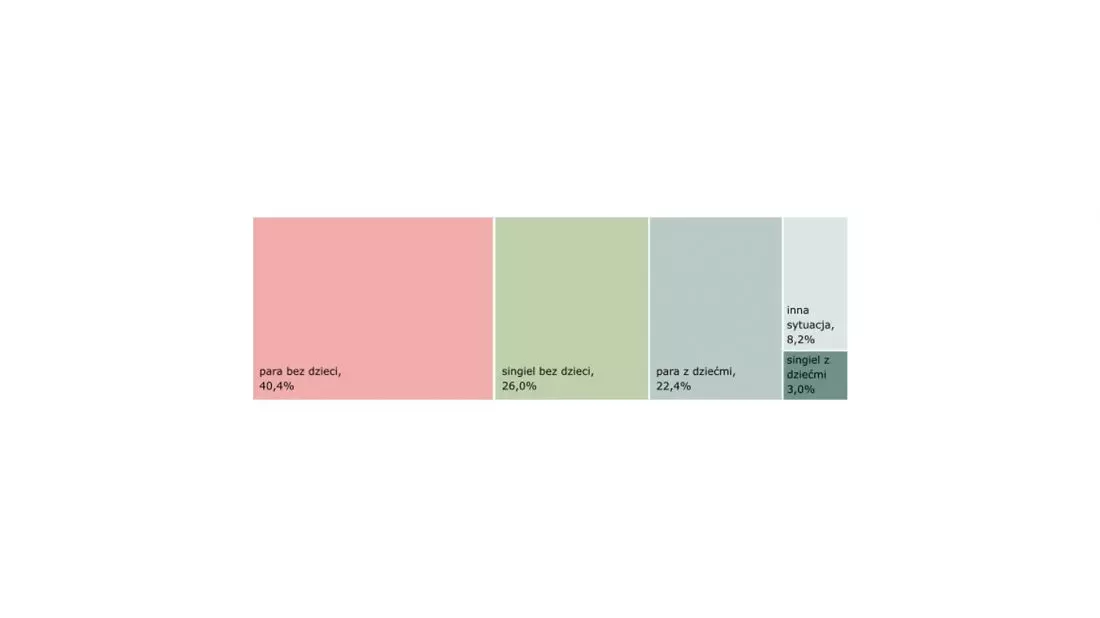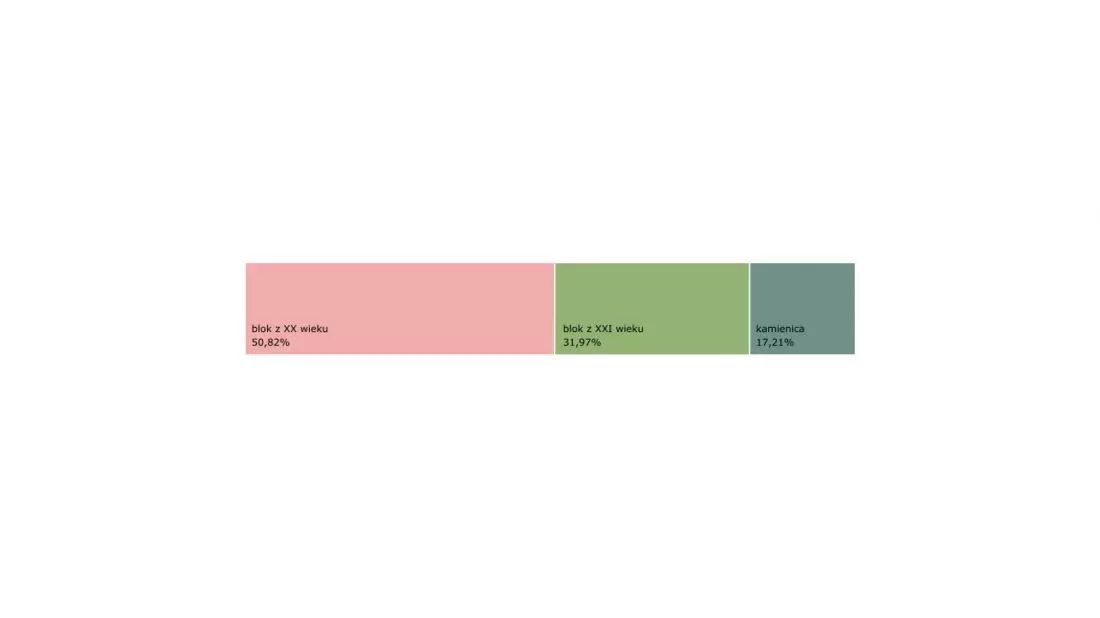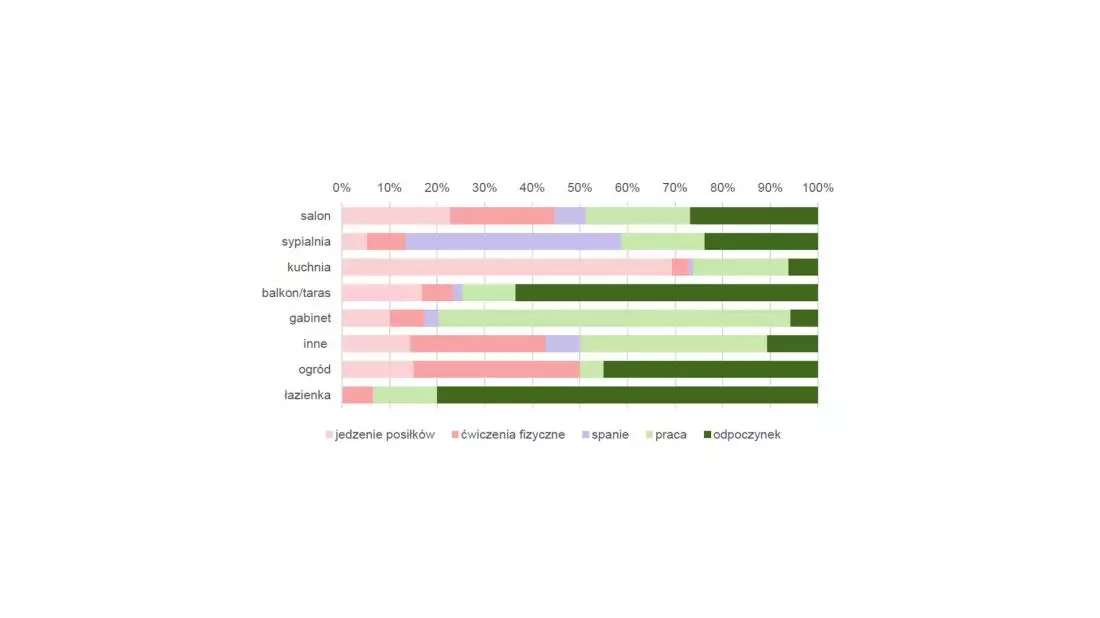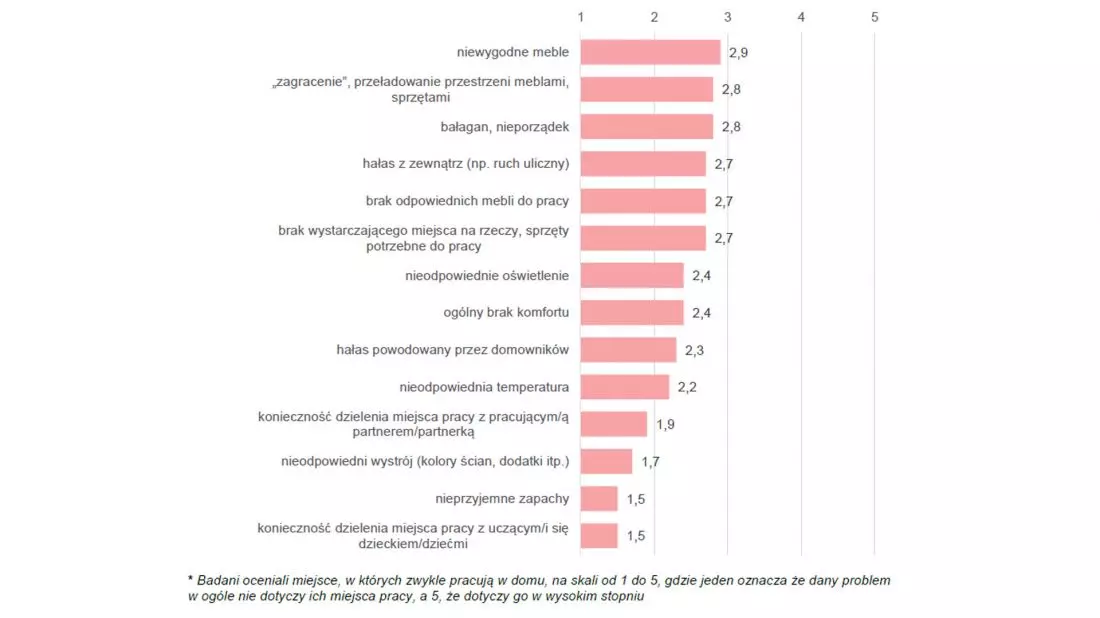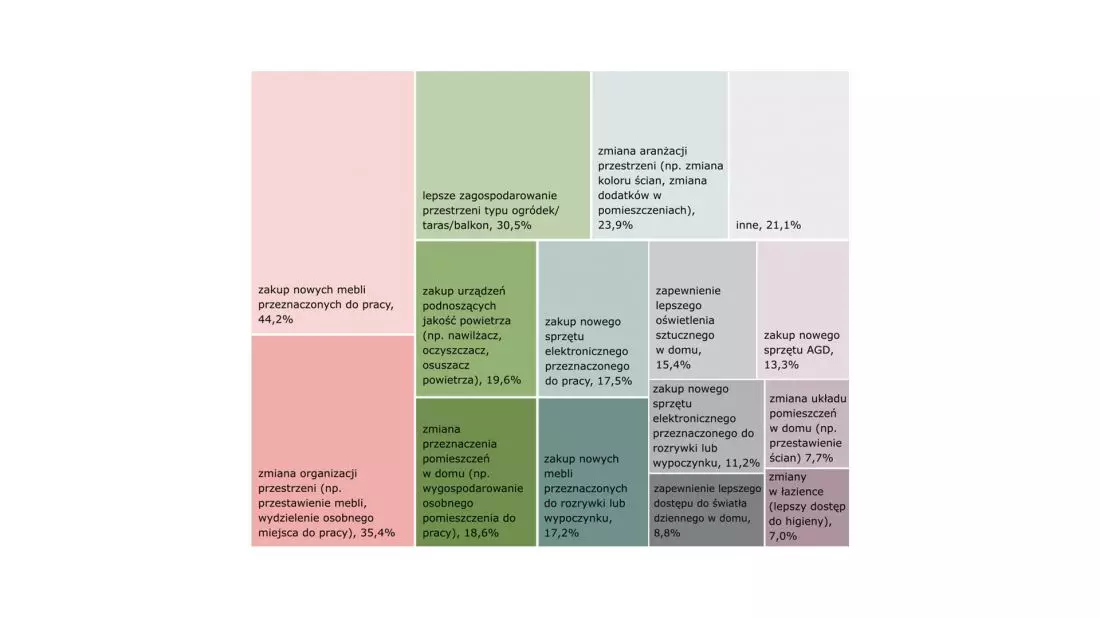Results of the survey "Quality of life at home during a pandemic"
Pandemic, lockdown, quarantine, isolation - since the beginning of 2020, many of us have had to spend more time in our apartment than ever before. Through hours of lockdown, we have begun to pay attention to issues that previously did not bother us - sound, light, temperature, the amount of furniture and plants, the intermingling of work and rest spheres. As many as 73% of respondents said that the way they evaluate their home has changed during this time.
Thesurvey, titled "Quality of Life at Home during the Pandemic," was created in cooperation between the Łódź Design Festival and Question Mark Social Research Bureau, Ceramika Paradyż and invited experts. It concerned changes in functioning in apartments, which almost overnight became special "micro-worlds". This is a topic that, while close to virtually everyone, has not yet been recognized and described in a systematic research reflection. This state of affairs has changed with the recently published comprehensive 86-page report.
Not only phenomenal design and quality, but also trend observation and researched knowledge are of great importance to us in the process of creating new collections. Receiving an invitation to collaborate on this project from the creators of Łódź DesignFestival, which we have invariably supported since its inception, we did not think for a moment. Becoming a partner of the survey, we wanted to verify how the perception of our apartments has changed over the last year and a half, what are the needs of Poles in the new reality. We believe that the conclusions of the report will allow us all to understand the processes taking place even better, and will help us adjust our offer to the requirements of the modern world," says Dominika Traczyk, marketing director of Ceramika Paradyż, the survey partner.
household type
© Ceramika Paradyż
The survey covered professionally active 25- to 50-year-olds from cities with more than 100,000 residents. The goal was to reach people for whom having to spend most of their time at home could prove a challenge, as their "micro-worlds" are not spacious. Therefore, the criterion was to occupy a unit in a block of flats or townhouses, with an area of no more than 70sqm. The survey began with an elaborate questionnaire, which elicited comprehensive information from respondents on how their use of housing changed under the pandemic, and at the same time how they felt about being in the same space while working, eating, playing or resting. A total of 366 respondents answered the questions posed in the survey: living alone, in couples, with and without children, in apartments of less than 40 sqm, but also nearly 70 sqm. Most of the respondents to the survey were younger people (20 - 35 years old, 60% of respondents) educated (at the master's level, 71%), doing work that requires specialized knowledge and skills, and, as a result, having a fairly good financial situation (the most frequently indicated average level of net household income was 10 thousand zlotys and more, 22%). As many as 40% of people said that their financial situation is better than a year ago, while according to 45% it has not changed. This is confirmed by the declarations of many people that, influenced by the pandemic, they have decided to change their apartment to a larger one or a house.
type of building inhabited
© Ceramika Paradyż
working in the study and in the dressing room
We treated this study as exploratory, approaching it not with a series of precisely formulated hypotheses, but with the conviction that the everyday lives of most of us have undergone changes, many of which may prove more permanent than the pandemic itself. We wanted to show these changes as part of arranging ourselves in a new reality, requiring the actual redecorating of our homes. How did we deal with it? Which solutions worked and which didn't? Which ones will stay with us for the long term? These questions accompanied us throughout the research process," explains Izabela Franckiewicz-Olczak of Question Mark.
We analyzed such aspects of places of residence as air quality, temperature, light, acoustics, functionality of furniture and aesthetics of decor. These were most often the source of satisfaction or frustration for the respondents and led to changes made as a result of subsequent lockdowns. Much attention was paid to working from home, which initiated the most changes in the existing ways of using home space. The survey also touched on the future - whether respondents anticipate continuing to spend more time at home and whether they plan any changes as a result.
Respondents' preferences for a post-COVID work model - 19
© Ceramika Paradyż
An additional 25 casual interviews were conducted as part of the survey. Thanks to attention to the diversity of respondents, it was possible to obtain rich qualitative data dedicated to the challenges of lockdown, among others. from the point of view of a single woman living in a studio apartment, as well as a couple with two children, having two or three rooms with a kitchen, people who could set up a study in their home, as well as those who worked in a 3-meter closet or in a room with a small child playing at their feet. As a result, the study was part of a trend in the sociology of everyday life, within which ways of coping with isolation and constructing "micro-worlds" can be treated not only as a valuable object of study, but also as a reference point for discovering and analyzing broader social phenomena.
Functionality rarely goes hand in hand with aesthetics
Spending more time in the apartment not only affected how we use it, but may have significantly changed the level of satisfaction with staying in it - as many as 73% of respondents said that the way they evaluate their apartment had changed .
Respondents began to pay attention to the things that previously did not bother them, that is, primarily acoustics, light, temperature, the amount of furniture and plants, the interpenetration of the spheres of work and rest. Respondents primarily believe that there is too little sunlight in their apartments, although at the same time those who are satisfied with the amount of light, in turn, point out that temperatures are too high during the summer season. They also complain about too much noise, especially noise they have no control over - the sound of renovations being carried out in other apartments, which intensified during the lockdown, noise from the nearby street, and children playing in the yard. More than half of the respondents emphasize too little separation between professional and private space. For some respondents, the mere sight of a desk in the living room or bedroom, for example, makes the apartment cease to be a home for them and become an office. At the same time, a very small group of survey participants (13%) could afford to designate a separate room in the house just for work, which is the dream of most respondents, and for those who are planning to buy a larger apartment - the possibility of creating a study or studio in it is one of the most important selection criteria.
ways of using individual rooms
© Ceramika Paradyż
The interpenetration of the spheres of work and rest, and the collision of activities carried out at home, caused both dissatisfaction with the lack of suitable conditions for the home office, and frustration caused by the need to adjust home duties to the requirements of work. Some also pointed to the functionality of the work space rarely going hand in hand with its aesthetics - because the desk and chair take away from the atmosphere of a space created for relaxation, and often do not match the rest of the furniture, as their purchase was dictated primarily by ergonomics. There were opinions that with the start of remote work, the respondents stopped liking their apartments, began to suffocate in them, and were disturbed by more and more things. It was for these reasons, among others, that as many as 34% said they rated their apartment worse than they did before the pandemic - primarily due to the fact that it was too small or poorly laid out, creating a sense of disorder, clutter and "getting in each other's way."
Assessment of where respondents usually work at home - average ratings
© Ceramika Paradyż
Home spa, equipped balcony and "mobile" interiors
So, how did the respondents deal with obstacles to the free use of their apartment? How did they take care of their physical and mental comfort? Among the solutions used by survey participants are:
- investing in bathroom amenities to make it a home spa, a place that replaces closed beauty and hairdressing salons and at the same time provides an easily accessible respite from work and household responsibilities,
- retrofittingthe kitchen with amenities such as rails or appliances like a thermomix, waffle iron, and even pots and other basic accessories,
- retrofitting the apartment not only with furniture needed for work, but also with sofas, armchairs, in case social life moves to the apartment in case of further lockdowns,
- replacing or adding decorative elements, minor renovations,
- using decorative elements to separate spaces in the apartment,
- creating "mobile" interiors, that is, primarily furnishing them with furniture that can be easily moved depending on the functionthe room is to serve at the moment,
- purchasing equipment that made it possible to exercise at home,
- changing the equipment used for entertainment - the competition for TVs is becoming projectors, projectors, large monitors used for games,
- using previously "inactive" spaces in the apartment - for example, a hallway turned into a temporary gym or playroom, arranging "mini gardens" on balconies,
- noticing the decorative functions of lighting,
- striving for minimalism, limiting purchases, insisting on acquiring, for example, used furniture instead of new, organizing and "de-cluttering" the apartment.
types of changes respondents would like to make in their place of residence
© Ceramika Paradyż
The above examples shed light not only on how respondents dealt with combining work and private life in one space, but also provide evidence that sometimes even the smallest investment can significantly improve the quality of time spent in an apartment. The prerequisite, of course, is that the apartment itself offers us adequate space - otherwise, as some of the respondents emphasized, any attempt at change is like a domino cube and affects almost the entire apartment, which in their opinion is both discouraging and too costly. They are waiting for the opportunity to return to the office, and if they can afford it, they are buying or planning to buy a larger apartment. Those planning to move emphasize that the lockdown has made them aware of what to pay attention to when arranging in a new apartment or house, and what constitutes the interpretation of a well-arranged interior - such as plenty of functional storage, separation of individual spaces, the right size and type of furniture.
reasons for not making changes in your home, related to the need to work remotely
© Ceramika Paradyż
A lesson in home architecture and ergonomics
The pandemic can therefore be considered an accelerated and forced lesson in home architecture and ergonomics, during which the shortcomings of our homes made themselves known to such an extent that they could no longer be ignored. If they could be remedied or a more comfortable accommodation sought, it turned out that the apartment could provide for the realization of almost all the needs that up to that point had required one to get out of it.
Lockdowns also contributed to an increased use of technological goods and solutions previously considered luxuries (air conditioning, cleaning robot, projectors, thermomix kitchen appliances, etc.).) Analyzing the changes in the housing situation under the influence of the pandemic, it is hard not to resist the impression that, especially in this sphere, the acceleration of individualization processes is evident - a well-appointed, comfortable and tasteful apartment makes it more convenient to carry out many activities without leaving it at all.
types of changes respondents would like to make in their place of residence
© Ceramika Paradyż
Professionally, I teach people that statistics can and should be befriended, because they wonderfully allow us to understand reality, especially the current reality, which is new and surprising to us. The report provides valuable statistics on the basis of which we can undertake real changes in our space, so that we can function more easily in our pandemic everyday life," says Janina Bak, statistician, university teacher and writer, who runs the popular blog "Janina Daily.
Janina Bąk was invited to discuss the results of the survey at the conference "Designing #LEPIER: The perfect home for new times", organized as part of the special September edition of the ŁDF - LEPIER 2.0. Also participating were Dr. Joanna Jurga (SENSE/ISOLATION/PRACE lecture), Izabela Franckiewicz-Olczak and Aleksandra Podkońska (Question Mark), Artur Celiński of City Magazine (analysis of the impact of the pandemic on the housing situation worldwide) and Katarzyna Księżopolska of MAGAZIF (presentation "New offices for new times. How are workspaces changing?").
Both the transcript of the conference broadcast and a pdf file with the complete version of the "Quality of Life at Home during a Pandemic" report can be found on the lodzdesign website - free to download and without registration.
For more information, visit the company 's Ceramika Paradyż Sp. z o.o. page on theAiB portal.






































